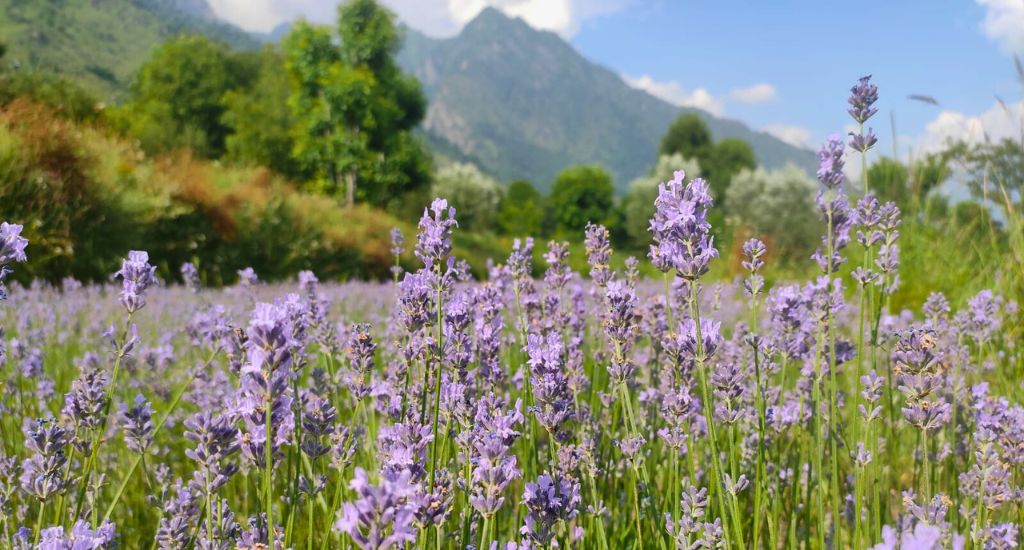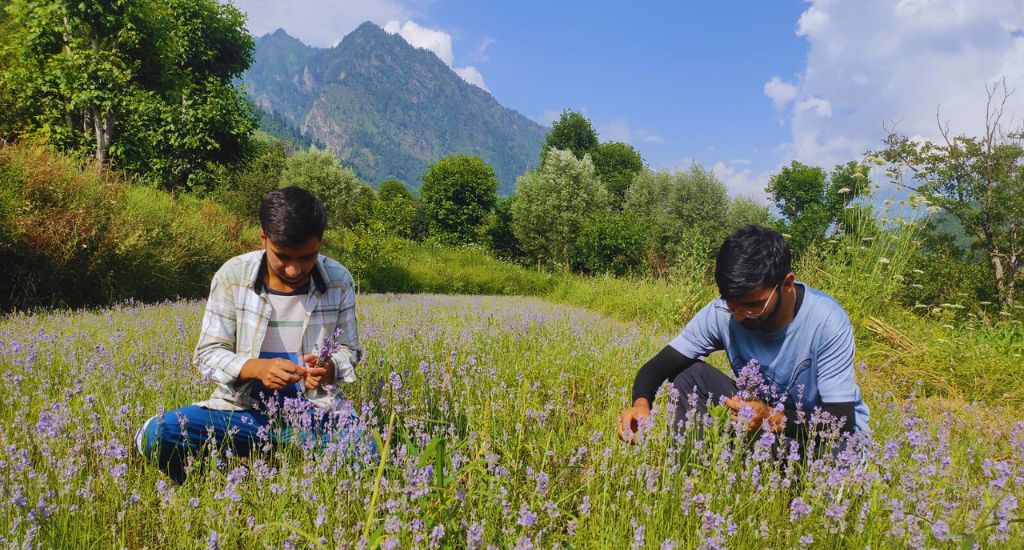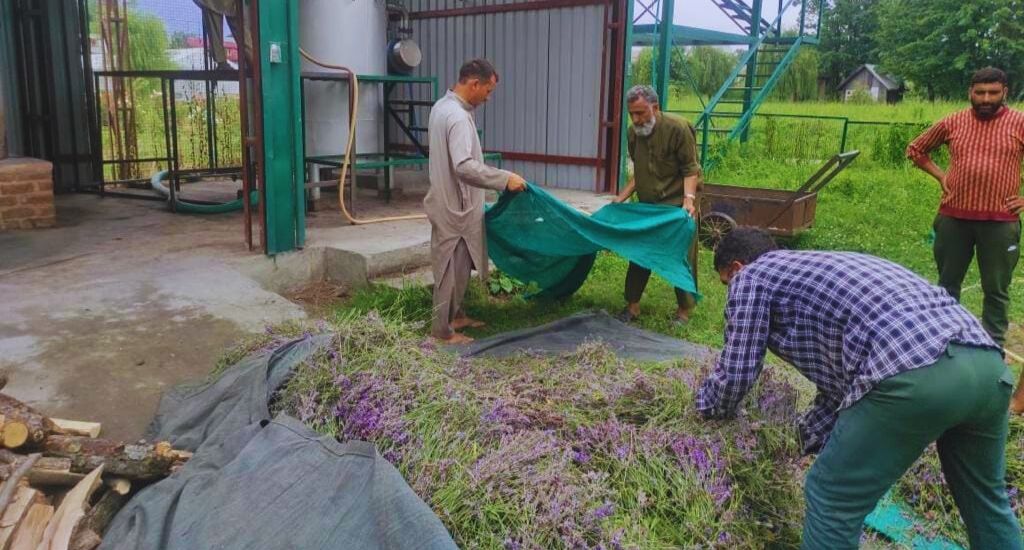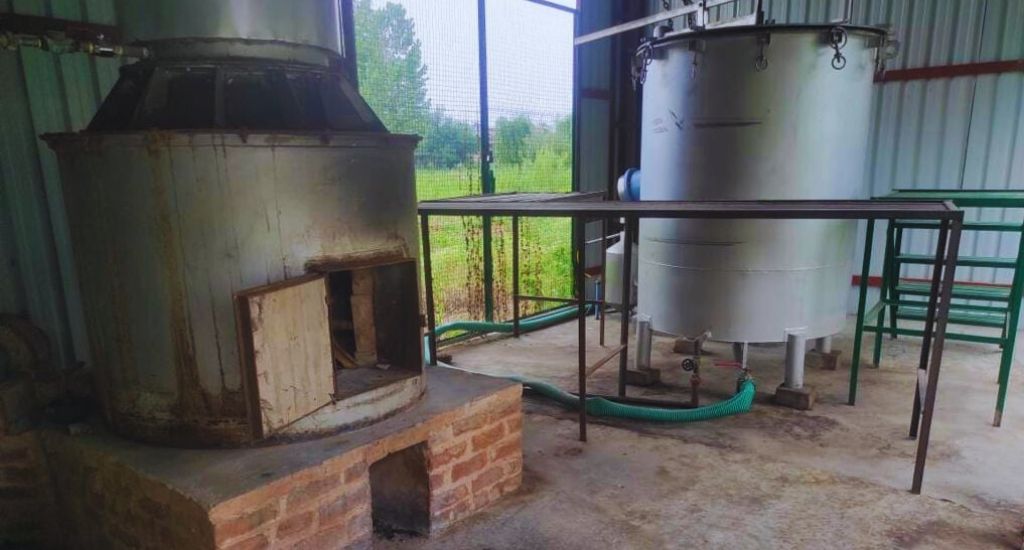
Kashmir’s purple revolution with lavender cultivation
Prized for its oil, lavender blooms are being farmed on parcels considered wastelands before and these have cast a spell of hope, a promise of prosperity entwined with fragrance.

Prized for its oil, lavender blooms are being farmed on parcels considered wastelands before and these have cast a spell of hope, a promise of prosperity entwined with fragrance.
As the sun descended beyond the horizon, casting the sky in hues of crimson, a solitary figure stood at the edge of a sprawling field in the foothills of Sonamarg in central Kashmir’s Ganderbal district. The man’s gaze, laden with pride, swept over the expanse of purplish lavender flowers that stretched before him.
Reyaj Ahmad, a weathered farmer of 45, saw a fortune growing in his lush field – a kilo of essential oil extracted from fresh lavender fetches Rs 15,000 to Rs 25,000.
His 10-kanal farm, once a barren and forgotten slope adorned with pebbles and sporadic wild grass, had undergone a remarkable metamorphosis. The previously disregarded Karewas – meaning “elevated table land” in Kashmiri and considered unfit for crops – and desolate hill slopes in Kashmir are undergoing a swift and vibrant transformation, turning a shade of purple and revitalising the local economy.
Lavender cultivation has emerged as the catalyst behind this change, gaining traction in various regions across the Kashmir valley.

For Reyaj, the transformation was set into motion by a friend’s whisper in 2019, a suggestion that seemed like folly at first. “I was reluctant,” he recalled, as the path of lavender cultivation was paved with challenges, each sapling costing Rs 5. That entailed an investment of Rs 50,000.
Yet, the allure of possibility prevailed, and the farmer plunged into this aromatic endeavour. Time flowed as seasons danced, and the first harvest arrived, bestowing its gifts upon Reyaj.
Also Read: A dose of dandelion soothes Kashmir’s palate and health
Lavender, or Lavandula angustifolia, with its dainty leaves and bluish-purple blossoms, held the promise of prosperity. Its fragrant essence, captured in essential oils, wove itself into perfumery and medicine, an alchemical treasure coveted by many.
Even the flowers, in their delicate repose, found purpose as ingredients in beauty elixirs and skin potions. Beyond its allure for humans, lavender stood sentinel, repelling insects with its serene fragrance.
As stories of triumph echoed through Kashmir, lavender cultivation expanded. Among them, Rubeena Bashir emerged as a luminary, a woman of wisdom and the soil. Educated and spirited, Rubeena nurtured her lavender dreams, turning a 300-kanal patch of land in Khansahib village of central Kashmir’s Budgam into a sprawling canvas of purple blooms.

“I began with a humble patch near my dwelling,” Rubeena reminisced, her voice carrying the weight of years gone by. Encouragement bloomed alongside her crops, prompting her to embrace more land.
Amidst the Karewas, Rubeena found the soil’s embrace, a testament to her ascent from farmer to agripreneur. A symphony of labour echoed in the fields as workers tended to the blossoms, and the rain-fed lavender flourished upon the Karewas.
Dr Shahid Rasool, senior scientist in genetic resources and agro-technology at CSIR, overseeing the field station in Pulwama, affirmed that lavender cultivation demands minimal water.
He explained: “The physiology of the Karewas and hill slopes creates an ideal environment for the luxurious growth of lavender. With abundant lands like these in the valley, aromatic plants like lavender offer farmers a golden opportunity to capitalize on the global demand for such botanicals.”
Also Read: Kashmir’s farmers switch from growing apples to exotic greens
A land once neglected through generations was now awash with a tapestry of vibrant blooms.
The transformation extended beyond blooms and fields; it reverberated in machinery and innovation. The distillation machines, once distant novelties, now stood locally available, bridging the gap between flower and oil.
Bashir Ahmad, a farmer in Budgam, shared the shift — from selling flowers to traders to crafting oils for the market. With each drop of lavender essence, farmers claimed their stake in the aromatic symphony, shaping their own destinies.

This journey, a fragrant thread in the fabric of progress, aligned with the Purple Revolution campaign. Launched by the Union Ministry of Science and Technology in 2016, the Aroma Mission wove dreams into reality in collaboration with the Council of Scientific and Agricultural Research (CSIR).
Under its aegis, lavender blossomed, and with each petal, the landscape transformed. Choudhary Mohammad Iqbal, director of agriculture in Kashmir, beheld the vast potential within the hills and valleys. Lavender emerged not only as a cash crop but as an artist’s palette, splashing the land with hues of purple. A sensory marvel beckoned tourists to the fields at Nunar in Ganderbal and Pahalgam in south Kashmir, where selfies and snapshots captured the union of nature and aspiration.
The mission echoed in Iqbal’s words, a call to adorn every barren hill and forsaken slope with lavender’s regal hue.
Also Read: Kashmir’s walnut wonders
The lead image at the top shows A view of a lavender field situated on the foothills in Ganderbal’s Kangan village (Photo by Nasir Yousufi)
Nasir Yousufi is a journalist based at Srinagar.